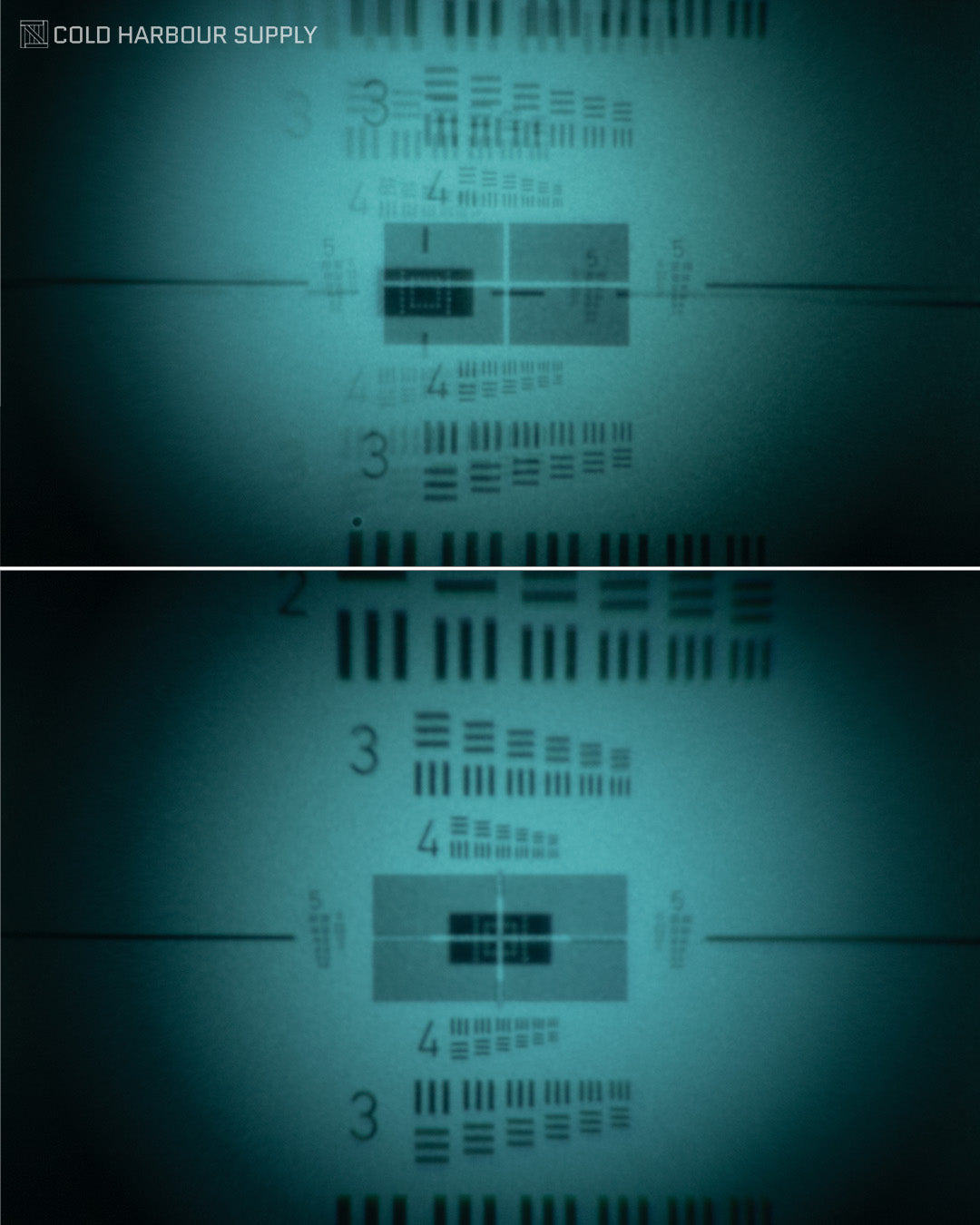
What is Collimation?
Share

What is collimation?
You may have heard of this term somewhere in your search for night vision and possibly dismissed it as yet another night vision jargon but in fact, collimation has one of the most important roles to play in binocular night vision.
Believe it or not, binocular night vision housings come with optical pods that often do not line up perfectly. Collimation is the process of aligning the two independent optical axes of each pod so they both point exactly straight in three dimensional space. Why is this important? When using a pair of goggles that are not properly collimated, the human eye and brain tries to correct the misalignment by either crossing your eyes subconsciously, or your brain has to work harder to mentally align the two images. Over time this can become tiresome and can result in fast fatigue compared to a properly calibrated set of goggles.
Pictured are some through-tube photos of a binocular device on our Hoffman collimation bridge. How the collimation bridge works is that the goggle sits on a very precise location on the Hoffman test set and two distinct reticles are presented to each optical pod (you can actually see what each reticle looks like in the first photo). Then the bridge is installed over top of the goggle in a precise location and prisms essentially merge the images together into one eyepiece. This is very difficult to achieve without a proper test set or a custom-built precision collimation rig.
This device in the first photo was not assembled or calibrated by us and it looks like it was collimated using one of the DIY methods. The first photo is how it was received, notice that you are essentially seeing double. Your brain will naturally try to correct for this and cross your eyes. The problem is that while the misalignment is obvious looking at a two-dimensional photo on a screen, this is not obvious when looking through the goggle as your brain may naturally try to correct for this, and essentially make you cross-eyed.
The second photo is after it has been properly collimated. The white cross hair sits perfectly in the middle of the black square and the resolution test chart numbers lined up - this is perfect collimation AND perfect diopter calibration.
If there is an individual or company selling night vision but does not own a collimation rig, there is a high likelihood that collimation was not performed at all. This results in that is barely serviceable but far from perfect. Some may even try to convince you that proper calibration and collimation is not necessary. We demand perfection and so should our customers and the wider night vision community. Unfortunately without these tools or an in-house quality control process, there is no way to verify perfect collimation, calibrated diopter, amongst other things. All night vision is not built equally. Don't live with "good enough". Screen the retailers you are thinking of buying from and ask them about their build process and tools. Demand more.
